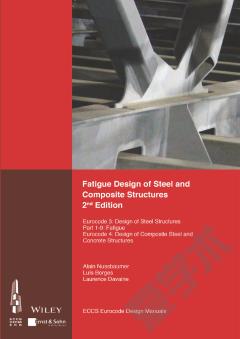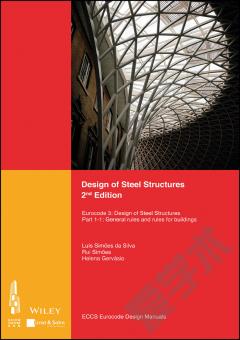Fatigue Design of Steel and Composite Structures —— Eurocode 3: Design of Steel Structures, Part 1-9 Fatigue; Eurocode 4: Design of Composite Steel and Concrete Structures
----- 钢与混合结构疲劳设计:欧洲规范 3—设计钢结构 章节1—9 疲劳 欧洲规范 4—设计钢筋混凝土混合结构
PREFACE ACKNOWLEDGMENTS SYMBOLOGY TERMINOLOGY 1 INTRODUCTION 1.1 Basis of fatigue design in steel structures 1.2 Damage equivalent factor concept 1.3 Codes of Practice 1.4 Description of the structures used in the worked examples 2 APPLICATION RANGE AND LIMITATIONS 2.1 Introduction 2.2 Materials 2.3 Corrosion 2.4 Temperature 2.5 Loading rate 2.6 Limiting stress ranges 3 DETERMINATION OF STRESSES AND STRESS RANGES 3.1 Fatigue loads 3.2 Damage equivalent factors 3.3 Calculation of stresses 3.4 Modified nominal stresses and concentration factors 3.5 Geometric stresses (hot spot stresses) 3.6 Stresses in orthotropic decks 3.7 Calculation of stress ranges 3.8 Modified Nominal stress ranges 3.9 Geometric stress ranges 4 FATIGUE STRENGTH 4.1 Introduction 4.2 Fatigue detail tables 4.3 Determination of fatigue strength or life by testing 5 RELIABILITY AND VERIFICATION 5.1 Generalities 5.2 Strategies 5.3 Partial factors 5.4 Verification 6 BRITTLE FRACTURE 6.1 Introduction 6.2 Steel quality 6.3 Relationship between different fracture toughness test results 6.4 Fracture concept in EN 1993-1-10 6.5 Standardisation of choice of material: maximum allowable thicknesses REFERENCES ANNEX A STANDARDS FOR STEEL CONSTRUCTION ANNEX B FATIGUE DETAIL TABLES WITH COMMENTARY ANNEX C MAXIMUM PERMISSIBLE THICKNESSES TABLES
{{comment.content}}








 京公网安备 11010802027623号
京公网安备 11010802027623号